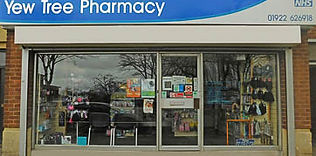Should you eat more or less salt in the heat? An expert sets the record straight
- Christopher Chanin
- Aug 4, 2022
- 3 min read

With the summer season upon us, we find ourselves asking endless questions on how to cope, including whether we should eat more or less salt in the heat.
It seems most people think that because when we sweat, we release salt from our body logically we must need to consume more in our food to make up for it.
But it's not quite as simple as that.
Why does our body lose salt in the heat?
First up, it's important to understand how the process works, before trying to rectify it.
"As your body becomes too hot, sweat is released which allows your body to cool," explains Sheena Bhageerutty, Assistant Nutritionist at Action on Salt, which is working to lower population salt intake.
"As well as water being released, electrolytes such as sodium, potassium and chloride which are in your sweat are also released, and this is what is normally meant by ‘salts’, i.e. a whole range of minerals, not just table salt."
Sodium (part of salt) helps us to keep our body fluid balanced and is lost more when we sweat. "As we lose water, it is important to keep well hydrated, however don’t have too much fluid, or you can dilute the electrolytes in your blood too much," advises Bhageerutty.
Do I need to eat more or less salt in the heat?
So, while in moderation, we need to drink more water, surely we need to replace the salt we lose too.
But apparently, "We are already consuming more salt than we need so whether it’s the summer or winter, we should be trying to reduce our salt content overall" and "there is no need to increase it".
"In fact, you might be surprised to hear that many foods have hidden salt in them, even though they might be considered healthy," Bhageerutty adds.
"For example, bread is one of the biggest contributors to salt in our diet – because of the amount we eat, the salt content can add up. We need the food industry to stop adding so much unnecessary salt to our food."
While some food manufacturers are doing better than others at making healthier products, Bhageerutty suggests checking the label to see which brands have the lowest salt, as we might be harming our health without realising.
"Eating too much salt increases our risk of developing high blood pressure which is known as the ‘silent killer’ as it has no symptoms. High blood pressure is the main cause of strokes and heart disease in the UK and globally," Bhageerutty warns.
How much salt should we be eating normally vs in the heat?
It seems we don't even need to consume extra salt when exercising in warm weather either.
"A small amount of salt is lost in sweat but this is mainly for top-level athletes," Bhageerutty explains. " Our body can balance the amount of salt lost and regulate it with the amount we consume in our diet which is already too much – on average we eat over 8g of salt a day, but 6g is the maximum recommended upper limit."
So, whether the sun's out or not, we all need to be consuming the same amount of salt, no more than 6g (2.4g sodium) or one teaspoon a day for adults.
Children aged one-three should eat no more than 2g salt a day (0.8g sodium), four to six years no more than 3g salt a day (1.2g sodium), seven to 10 years no more than 5g (2g sodium) and 11 and over no more than 6g (2.4g sodium).
Babies should not eat much salt, because their kidneys are not fully developed to process it, according to the NHS. Babies aged under one year should have less than 1g of salt a day, and if they are breastfed, they should naturally get the right amount of minerals from this. Formula milk also contains a similar amount of minerals.
Checking salt on labels
In the UK, labels on pre-packed food will say how much salt they contain, which can help with choosing what to buy.
You'll usually find the nutrition label on the back or side of the packaging, or or sometimes on the front.
This might show the salt content as a percentage of your reference intake (RI) (guidelines about the approximate amount of nutrients and energy needed for a healthy diet) or have colour-coded nutrition information.
The later, the NHS explains, is to show whether the salt content is:
green (low)
amber (medium)
red (high)
"Try to eat high-salt foods only occasionally, or in small amounts, and aim to mainly eat foods that are green or amber," the website states.
"If the label only gives sodium, you can work out the amount of salt in it by multiplying the total sodium by 2.5. For example, 1g of sodium per 100g is 2.5g of salt per 100g."
So, next time you feel like you can grind more salt than usual on your dinner when you've been a tad on the sweaty side, you might want to think again.
Source: Hanna Millington, Lifestyle Write, Yahoo Life UK












































Comments